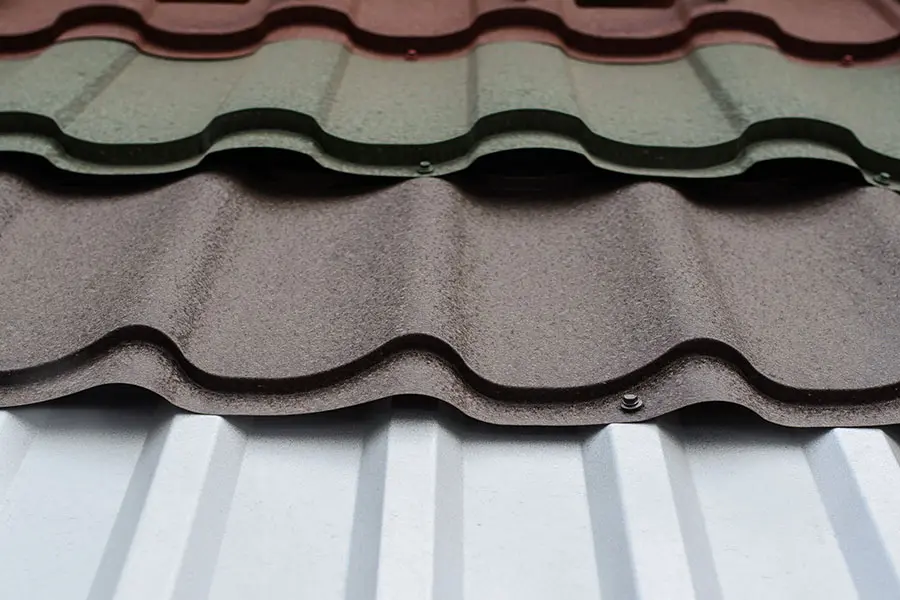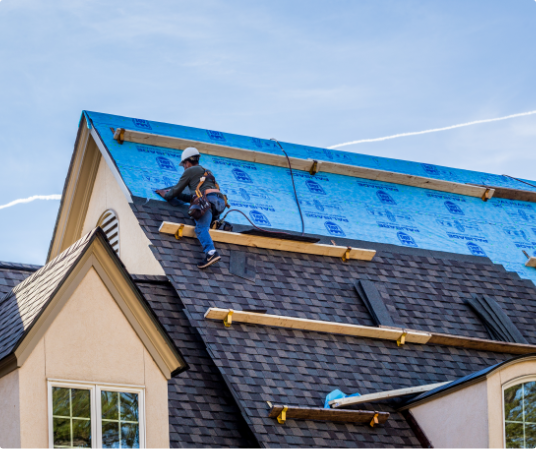Just How Gainesville Roofing Companies Can Change Your Home's Exterior
Just How Gainesville Roofing Companies Can Change Your Home's Exterior
Blog Article
Finest Practices for Ensuring Appropriate Roofing Ventilation
A well balanced intake and exhaust vent proportion, frequently 1:300, plays an essential duty, with intake vents ideally positioned at the lower side of the roof covering for awesome air access and exhaust vents at the peak for warm air departure. Maintaining insulation away from vents is vital to protect against air movement restriction.
Understand Ventilation Basics
Properly comprehending air flow essentials is necessary for ensuring the longevity and effectiveness of roof covering systems. Effective air flow alleviates moisture accumulation and temperature level extremes in the attic room, both of which can lead to substantial architectural damages with time. A well-ventilated roofing assists in stopping common issues such as mold and mildew growth, wood rot, and ice dams, which can endanger the honesty of the roof materials and the underlying frameworks.
The primary objective of ventilation is to assist in the movement of air, enabling for a regular exchange in between the interior and outside settings. This balance is attained with a combination of consumption and exhaust vents that interact to maintain optimal airflow. Consumption vents, commonly located along the soffits or eaves, permit fresh air to get in the attic area, while exhaust vents, commonly positioned at or near the roof covering ridge, allow hot, moist air to leave.
Secret factors influencing the effectiveness of roof ventilation consist of appropriate placement, ample sizing, and making certain that both intake and exhaust vents are unblocked. Regular inspection and upkeep are important to determine possible blockages, damage, or inadequacies in the air flow system, consequently guarding the roof covering's performance and toughness.
Types of Roof Vents
Roofing vents play a vital duty in keeping effective attic ventilation and, by extension, the overall health and wellness of the roof system. Various kinds of roofing vents are offered, each with distinct advantages customized to specific roofing requirements.

Soffit vents are set up under the eaves and operate in tandem with roof vents to ensure a balanced consumption and exhaust system. By permitting cooler air to go into from below, soffit vents promote the expulsion of hot air via top vents. Gable vents, located on the exterior walls of the attic, offer one more effective solution, particularly in homes with saddleback roofs.
Examine Your Existing Air Flow

Next, consider the age and condition of your roof covering materials and ventilation components. Older systems may not conform with current building ordinance or might have degraded over time, reducing their efficiency. Conduct a comprehensive assessment to determine any type of indications of wear and tear, such as corrosion, damage, or gaps that can compromise the system's efficiency.
In addition, determine the attic room temperature and humidity levels. Heats and moisture can suggest poor ventilation - roofing companies gainesville florida. Use a hygrometer and thermometer to get exact analyses, comparing them with outdoor conditions. Persistent discrepancies recommend possible issues that need dealing with.
Setup Best Practices
Effective installation of roofing ventilation systems is vital for making sure ideal efficiency and long life. Proper installation begins with recognizing the particular air flow needs of the building and the roofing it covers. This involves determining the proper proportion of consumption to wear down vents, typically sticking to the 1:300 rule, which specifies one square foot of air flow for each 300 square feet of attic room floor room.

The placement of vents is just as essential. Intake vents ought to be mounted at the roof's lower edge, usually in the soffits, to allow great air to enter. Exhaust vents, on the other hand, need to be set up near or at the roof covering's optimal to promote the leave of warm, moist air. This develops an all-natural airflow that assists maintain temperature level and moisture balance within the attic room area.
Seal all vent links diligently to prevent air leaks and prospective water seepage. Use high-quality products and adhere to maker guidelines to ensure resilience and effectiveness. In addition, incorporating ridge vents with baffles can dramatically boost air movement efficiency by avoiding wind-driven rainfall and snow from getting in the attic room.
Eventually, specific installment of roofing additional hints ventilation systems minimizes potential issues such click now as mold and mildew growth, ice dams, and architectural damages, guaranteeing the roof's integrity and the building's total health.
Regular Maintenance Tips
Uniformity in maintenance methods is basic to making sure the long-term efficiency of roof covering ventilation systems. Normal examinations are important, preferably executed biannually-- in the spring and fall. Throughout these examinations, ensure that vents are totally free of debris, nests, and other blockages that could restrain air movement. Look for any type of signs of moisture buildup or mold, as these can indicate improper air flow or leakages (gainesville fl roofing companies).
Use a soft brush or a vacuum cleaner to eliminate dust and debris from intake and exhaust vents. Be careful not to harm the vent displays or louvers throughout the procedure.
Proper insulation is just as important. Guarantee that attic room insulation does not block the vents, as this can significantly restrict air flow. If any insulation has moved or resolved, rearrange or change it to preserve an efficient obstacle.
Finally, replace any type of damaged or missing components quickly. Broken vents, broken shingles, or deteriorated blinking can all add to insufficient ventilation and ought to be addressed without delay. Normal maintenance makes certain that the roofing air flow system functions optimally, therefore extending the lifespan of the roofing itself.
Final Thought
Making certain correct roofing ventilation is extremely important for keeping the performance and sturdiness of a roofing system. Adherence to the 1:300 intake and exhaust air vent proportion, coupled with the strategic placement of vents, is crucial.
A well balanced intake and exhaust vent proportion, commonly 1:300, plays image source a pivotal function, with consumption vents ideally placed at the lower edge of the roofing system for amazing air access and exhaust vents at the height for cozy air exit. Intake vents, usually situated along the eaves or soffits, enable fresh air to get in the attic room space, while exhaust vents, frequently located at or near the roof covering ridge, make it possible for hot, moist air to escape.
Soffit vents are mounted under the eaves and job in tandem with roof covering vents to make certain a balanced consumption and exhaust system. By permitting cooler air to get in from below, soffit vents assist in the expulsion of hot air via upper vents. Adherence to the 1:300 consumption and exhaust air vent proportion, paired with the calculated placement of vents, is crucial.
Report this page